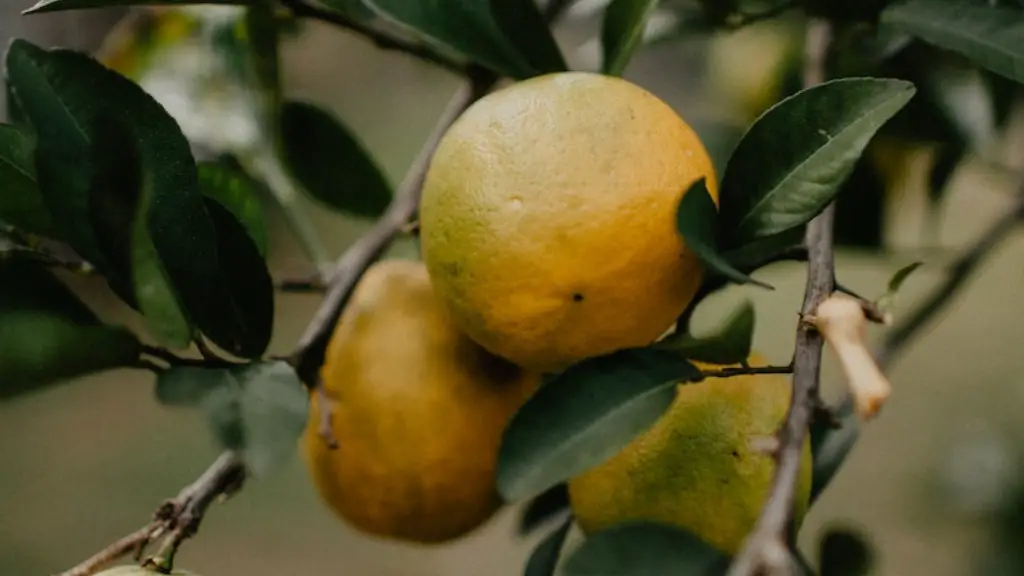What kind of lemon tree do I have? That’s a great question for any citrus grower and a good place to start for understanding how to care for the tree. Knowing the type of lemon tree you have can help you understand its needs, determine the best fertilizer and pesticide, and know what to do if something goes wrong. In this blog post, I’ll discuss the common types of lemon trees and how to identify them.
Types of Lemon Trees
The two most common types of lemon trees are the Eureka and the Lisbon. The Eureka is an evergreen tree that produces large, sweet and seedless lemons. It prefers warm climates and is a relatively low maintenance tree. The Lisbon is also an evergreen tree and a variety of Eureka that produces lemons with a thicker rind, making them suitable for juicing. This tree prefers cooler climates and is a bit more labor-intensive than the Eureka.
Identifying the Lemon Tree Species
Once you’ve established which type of lemon tree you have, you’ll want to look for specific characteristics that identify it as either a Eureka or Lisbon variety. For example, Eureka lemons have a more rounded shape and yellow-green skin, while Lisbon lemons are oval-shaped and have a more yellow-orange skin. Additionally, Lisbon lemons have more pronounced ribs and a slightly bitter taste. Once you can identify your lemon tree’s species, you’ll have a better understanding of how to care for it.
Factors to Consider
The type of lemon tree you have isn’t the only factor to consider when determining how to care for it. You’ll also want to consider your climate and soil conditions. For example, Eureka lemon trees need warm weather and well-drained soil, while Lisbon require cooler weather and more acidic soil. Additionally, you’ll want to understand your local pests and diseases and use the appropriate pesticide and fertilizer for your tree’s needs.
Care for Your Lemon Tree
Now that you know what type of lemon tree you have, what climate and soil your tree needs, and what pests and diseases to watch out for, you can start providing the necessary care. For example, Eureka lemon trees need to be fertilized three times a year, while Lisbon trees need to be fertilized twice a year. Additionally, Eureka trees need to be pruned during the summer and should be watered once every two weeks. The Lisbon tree, on the other hand, needs to be pruned twice a year and should be watered once per week.
Fertilizer for Your Lemon Tree
Another important factor to consider is the type of fertilizer to use for your lemon tree. There are many different types of fertilizer available, so it’s important to choose one that’s appropriate for your specific tree. Eureka lemon trees need a fertilizer that’s high in nitrogen, phosphorus and potassium, such as a 10-10-10 fertilizer. Lisbon lemon trees need a fertilizer that’s higher in nitrogen, such as a 15-10-10 fertilizer.
Pests and Diseases for Your Lemon Tree
Finally, it’s important to be aware of potential pests and diseases that could affect your lemon tree. Common pests of citrus trees include aphids, whiteflies, and mealybugs. Common diseases of citrus trees include greening, lichen, and root rot. If you notice any of these pests or diseases on your lemon tree, it’s important to take action quickly to prevent them from spreading to other nearby plants.
Harvesting Your Lemon Tree
Harvesting your lemons can be an exciting time when you’ve spent months of hard work caring for your tree. Generally, Eureka lemons can be harvested up to eight weeks after flowering, while Lisbon lemons can be harvested up to 12 weeks after flowering. You can determine when your lemons are ready to harvest by testing their sweetness and checking for softness in the skin.
Cleaning Your Lemon Tree
Cleaning your lemon tree is important for keeping it healthy and productive. You should remove any dead branches, leaves or fruits from the tree on a regular basis to prevent diseases or pests from spreading. Additionally, it’s important to prune the tree to maintain a good structure and allow more light to reach the fruit. Lastly, you should avoid heavy fertilization as this can lead to fewer fruit.
Spraying Your Lemon Tree
If you live in a region where pests and diseases pose a threat to your lemon tree, spraying it is necessary to keep it healthy. It’s important to choose a pesticide that’s approved for citrus trees and is appropriate for your region. Additionally, you’ll need to follow the application instructions on the label to ensure it is applied correctly. Lastly, it’s important to use the proper safety gear when applying any pesticide.
Winterizing Your Lemon Tree
If you live in a region with winter temperatures below freezing, you’ll need to take some steps to protect your lemon tree from the cold. It’s important to cover the tree in the winter with a layer of mulch, such as straw or pine needles, to protect the roots. Additionally, you’ll want to prune any low-hanging branches that are susceptible to frost damage. Lastly, you’ll want to water the tree during dry spells in the winter to keep the soil from becoming too dry.

